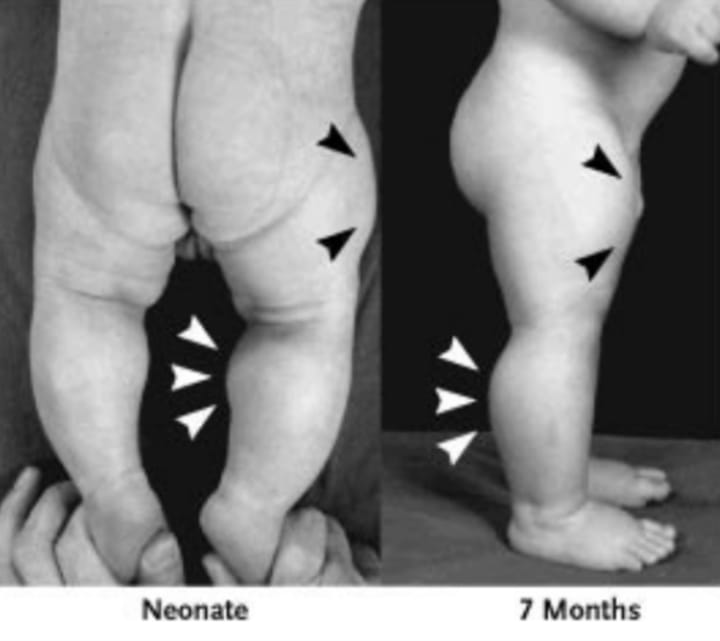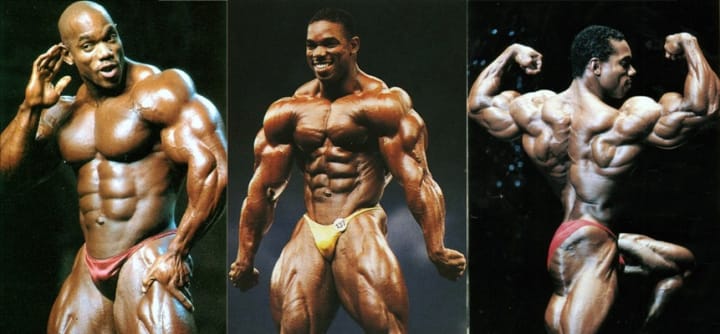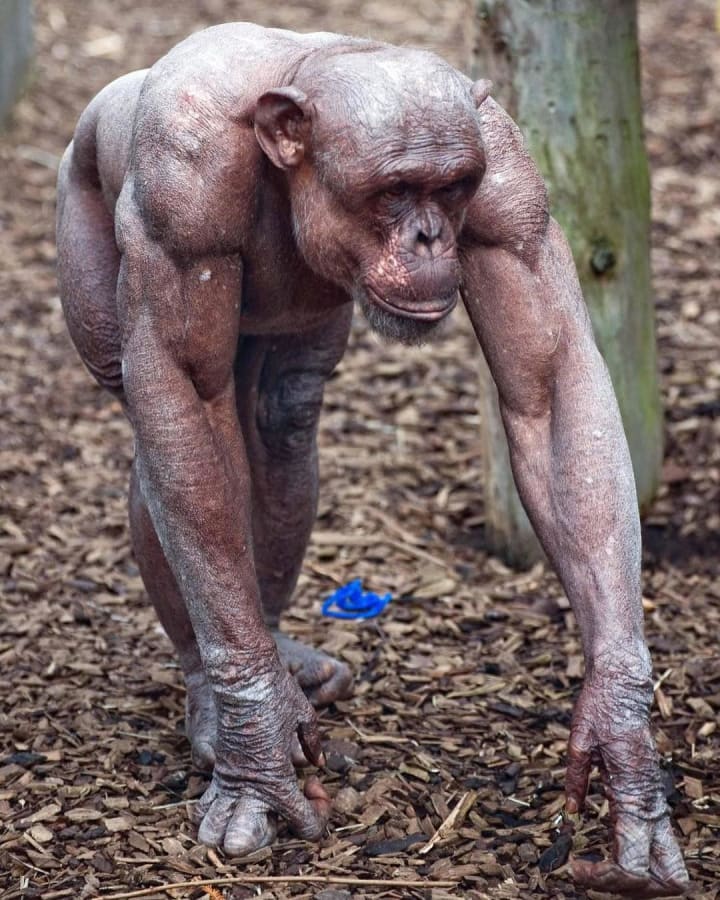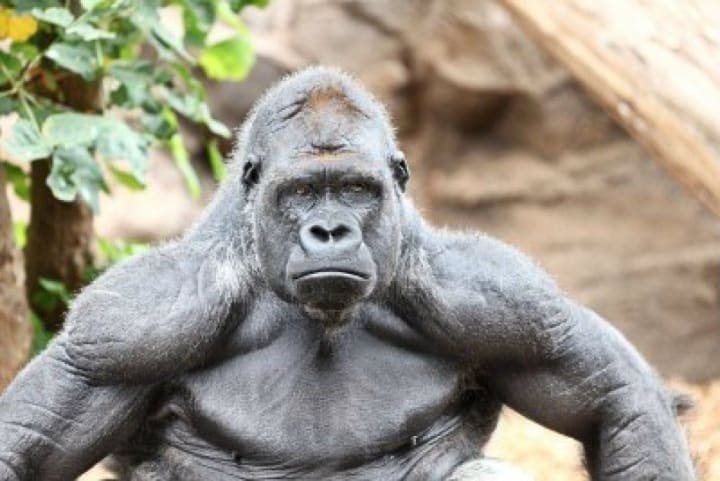From Olympian god to dad bod.
An evolutionary look into why we are shaped the way we are, and why we gain weight so easily.

In June 2004, New England Journal of Medicine reported a pretty interesting case. I will edit parts of it to make the medical jargon understandable, but here’s what it basically said:
"A healthy woman who was a former professional athlete gave birth to a son after a normal pregnancy. The identity of the child's father was not revealed. Stimulus-induced myoclonus (sudden loss of muscle tone induced by sound or touch) developed several hours after birth, and the infant was admitted to the neonatal ward for assessment. He appeared extraordinarily muscular, with protruding muscles in his thighs and upper arms. With the exception of increased tendon reflexes, the physical examination was normal. Hypoglycemia (low glucose levels in blood) and increased levels of testosterone and insulin-like growth factor I were excluded. Muscular hypertrophy was verified by ultrasonography when the infant was six days of age. Doppler echocardiography and electrocardiography performed soon after birth and every six months thereafter were consistently normal.

The stimulus-induced myoclonus gradually subsided after two months. The child's motor and mental development has been normal. Now, at 4.5 years of age, he continues to have increased muscle bulk and strength, and he is able to hold two 3-kg dumbbells in horizontal suspension with his arms extended. "
Imagine that. A four-and-a-half years old is lifting 3 kg dumbbells in each hand and holding them horizontal with arms extended. And all that without any physical training. Imagine how much stronger he is now, 16 years later.
How on earth is this possible?
He had a loss-of-function mutation int the MSTN gene, present on the long arm of chromosome 2. MSTN codes for a protein called Growth Differentiation Factor-8 or GDF-8 for short. GDF-8 is better known as Myostatin. The kid did not have functioning myostatin, or rather, no myostatin at all.
Myostatin is a 25 kDa protein that is secreted by our muscles cells to act on themselves (autocrine) to inhibit myogenesis: muscle cell growth and differentiation. With nothing to inhibit muscle growth, the kid’s muscles went bonkers and grew massively.
Myostatin deficient individuals grow up to have twice as much muscle mass as a normal humans, are much more stronger, have incredibly low body fat percentage, and can have godlike muscle gain on equal exercise compared to us plebs. As an addition, since the muscle load on the bones are more in these individuals, their bones are denser, thicker and hence, stronger. And all of this comes with no downsides at all. Talk about luck. Now, a convincing example.

This is Flex Wheeler, the “Sultan of Symmetry”. Although he never won a Mr. Olympia title, he’s said to have one of the most aesthetically pleasing bodies amongst bodybuilders. He always did easier and less intensive exercises than his contemporaries— lighter weights, leg presses instead of squats, something rarely seen in the world of professional bodybuilding. Why is he built like a brick shit-house then? Even if you guessed myostatin inhibition, no points for you. It’s all I have been rambling about.
Boring, isn’t it? Don’t run away— we’re getting to the good stuff.
Still with me? Now, why am I raving about myostatin?
Here’s why. Take a look at our closest living genetic relative— the chimp.

Or this slightly more distant relative, the gorilla:

I have specifically shown you hairless specimens to show you how jacked they are. No they do not work out, no they do not get protein rich diets, and no they aren’t on steroids. They are simply myostatin deficient. They are also members of Family Hominidae, the same us humans. So phylogenetically backtracking, there must have been a time in our evolutionary history when man (or at least early/late hominids) lacked myostatin and we were as magnificently sculpted as the Olympian gods.
They were the evolutionary ancestors who were vastly physically stronger than us.
You may ask why we lost such muscle mass when it gave us such an evolutionary advantage as superior strength.
To that I answer, we have no concrete evidence. There simply isn’t enough DNA samples of our ancestors to be found to pin-point when and why we developed a functioning MSTN gene. There are a few theories that check some of the boxes, so we’ll check them out.
Remember when I said a few paragraphs back that myostatin deficiency had no draw backs? That was in the context of modern times. Times of opulence. Evolutionarily, huge muscles are a liability, not an asset. Muscles are heavy, they decrease your agility and consume massive amounts of energy. Chimps and gorillas spend over 5 hours a day eating. Eating simply not to starve. Look up how much a pro bodybuilder or a strongman eats. You’d be amazed by the frequency and amount. Some of them eat 40 eggs a day. Try finding 40 eggs a day in the wild.
Us puny humans? We are done in less than an hour per day. But that leaves us with 4 hours+ extra every day to do stuff, like invent cool things such as tools and weapons. 4 hours a day over an entire life, over thousands of generations. That’s recipe for progress. With weapons and tools, we lost the need for herculean strength. Combined with scarcity of food in the wild, it only meant sense for us to shed all that muscle. Which evolution did for us using myostatin.

Now any extra food beyond our daily needs, goes to the storage as subcutaneous and visceral fat, for future need. And that's how a survival mechanism gave rise to the obesity pandemic we face today. Subcutaneous fat is also a great insulator, which must have kept us alive during the ice ages. (Since myostatin-less people have less than 5% body fat they are extremely susceptible to hypothermia— which forms the basis of a theory that the ice ages put positive selection pressure to have myostatin ingrained into our genome for good. I find this theory dubious for various reasons though.)
Combining all these factors, you get a pretty good idea why you’d rather have almost-naked-skinny-man as a partner instead of jacked-as-hell Flex Wheeler if you’re ever stranded in the wild.
About the Creator
Diptangshu Karmakar
Medical student. Certified nincompoop. Questionable bookworm and painter. Common sense: defenestrated. Interested in anthropology, evolution and history, especially military.






Comments
There are no comments for this story
Be the first to respond and start the conversation.